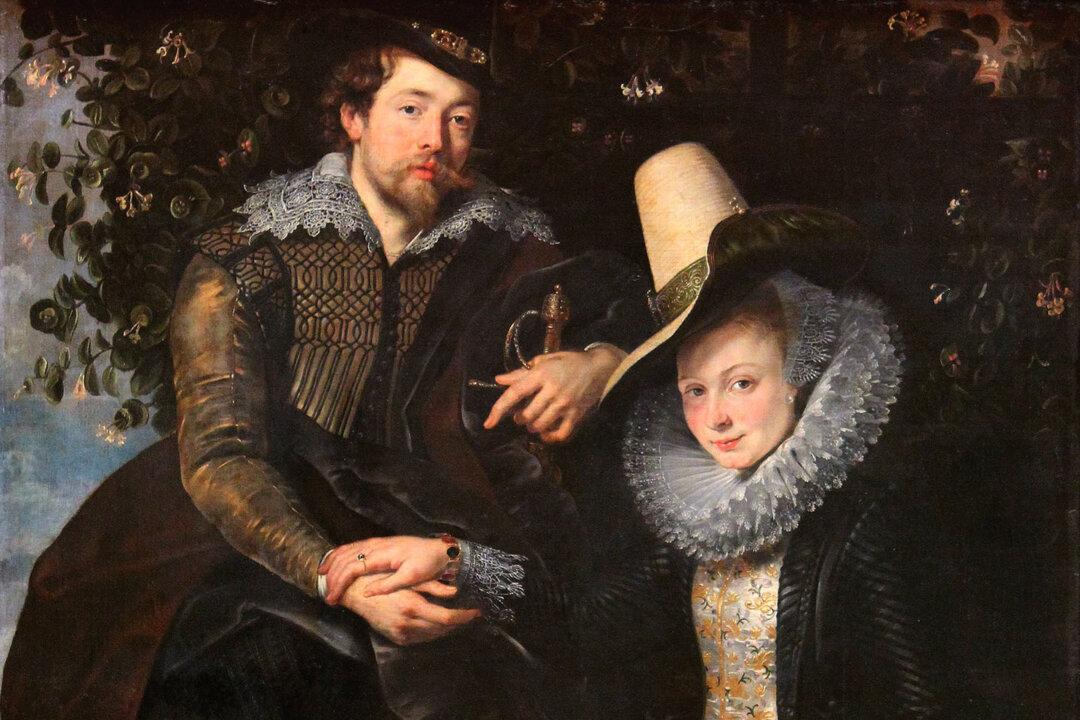A Flemish painter based in Antwerp, Flanders, Peter Paul Rubens (1577–1640) was deeply religious and his art reflected this. He celebrated his marriage with a wedding portrait of unequaled excellence: “Rubens and Isabella Brandt, the Honeysuckle Bower” (circa 1609–10).
Rubens, 32 at the time, sits with his new wife, Isabella Brandt, 18, in a beautifully composed double portrait. We find the couple sitting under a honeysuckle bower as if taking a short rest after a brief stroll. The poses of the figures show the bond that happens when marriage takes place, as they lean toward each other, forming a gentle oval space.






